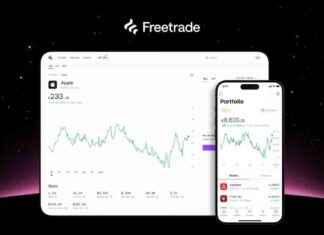Gold prices surged above $2,330 as investors placed their bets on the Federal Reserve (Fed) cutting interest rates later in the year. This increase was driven by the latest inflation data from the United States (US), which raised hopes for rate cuts. Additionally, the demand for safe-haven assets like gold rose due to the risk aversion caused by political turmoil in Europe.
The XAU/USD traded at $2,333, showing a gain of more than 1.30% after bouncing back from daily lows. Despite sour sentiment, US equities managed to recover slightly towards the end of the trading session. The Nasdaq was up by 0.28%, while the S&P 500 trimmed its losses and almost reached a flat level for the day.
In June, US Consumer Sentiment declined, while inflation expectations for the short and long term remained above the Fed’s 2% target. Investors reacted positively to the US inflation data released during the week, as they anticipate the central bank to make two rate cuts instead of one, as previously projected.
Traders are expecting a 39 basis point easing via December’s 2024 fed funds rate contract, with the US 10-year Treasury note yield dropping to 4.211%. This decrease in yield was beneficial for gold, offsetting the impact of China’s decision to pause its gold purchases.
The People’s Bank of China’s decision to halt its 18-month bullion buying spree affected the price of gold negatively. Even though this news weighed on the precious metal, the PBOC’s gold holdings remained steady at 72.80 million troy ounces in May.
The US Dollar Index (DXY) rose by 0.28% to 105.53, which capped the increase in gold prices. The University of Michigan Consumer Sentiment Index fell to 65.6 in June from 69.1, marking the lowest level of sentiment in seven months. Inflation expectations for the next twelve months are projected to remain unchanged at 3.3%, while the five-year forecast is expected to decrease to 3.1%.
Fed Chair Jerome Powell expressed less confidence in inflation progress and stated the Fed’s readiness to respond if jobs weaken unexpectedly. Despite weaker-than-expected US CPI and PPI reports, the NFIB Small Business Optimism Index survey for May revealed that businesses are struggling with higher prices and access to financing.
From a technical standpoint, gold prices are showing a neutral to downward bias, with the potential to test $2,300. The Head-and-Shoulders chart pattern indicates further downside, although buyers’ momentum is visible. If XAU/USD surpasses $2,387, it could move towards $2,400, while a drop below $2,300 could lead to support levels at $2,277 and $2,222.
In conclusion, the surge in gold prices was influenced by various factors, including inflation data, geopolitical risks, and market sentiment. Investors will continue to monitor the Federal Reserve’s actions and economic indicators to gauge the future direction of gold prices.








